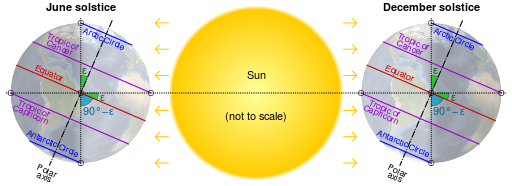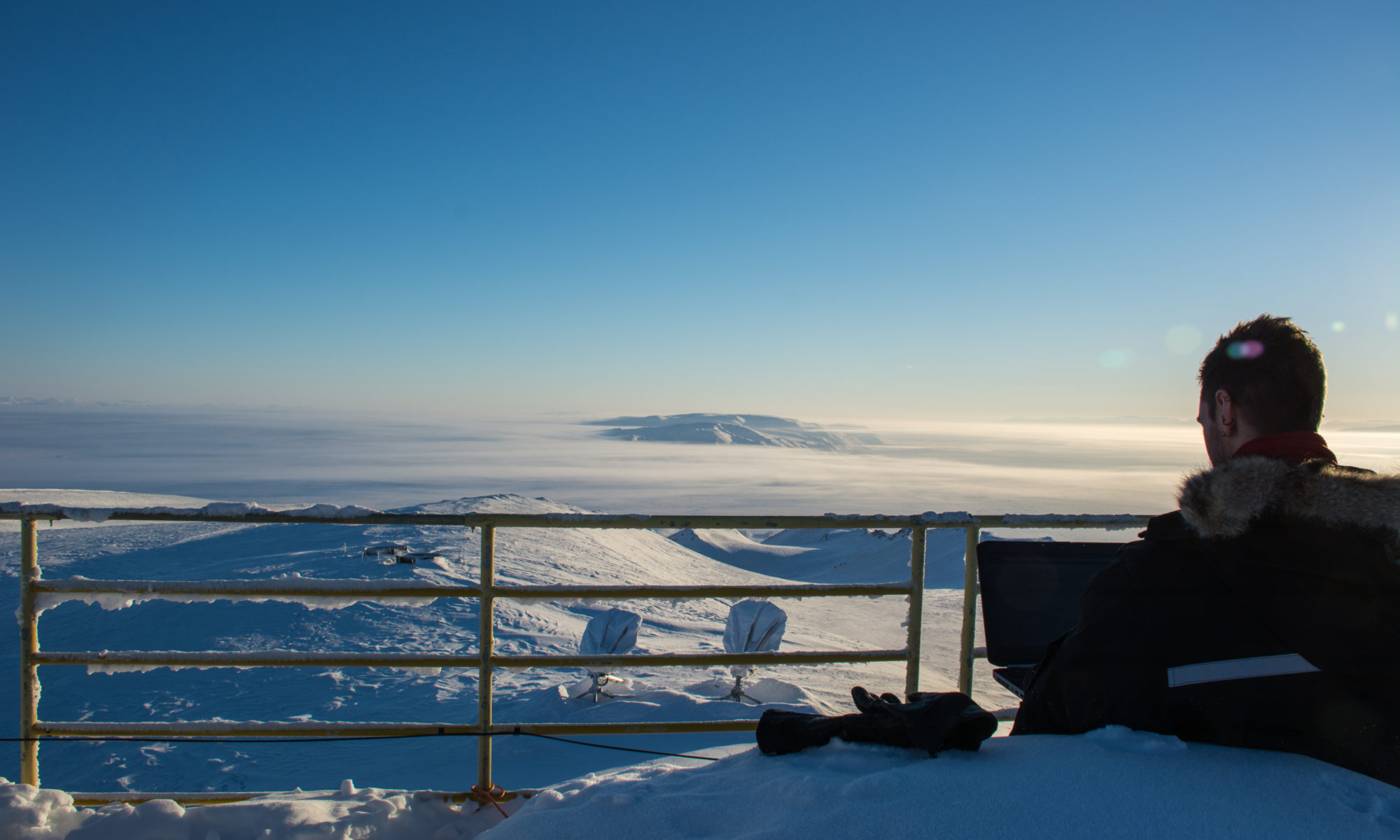Days are getting longer everywhere in the northern hemisphere this time of year.* In the Arctic, the change in sunlight is particularly dramatic.
A few days ago, sunlight returned to Eureka, Nunavut for the first time since October, marking the end of Polar Night.

During the transition between Polar Night and the continuous daylight of summer (“Midnight Sun”), a team of Canadian scientists take measurements of the changing atmosphere above Eureka at the Polar Environment Atmospheric Research Laboratory (PEARL) using specialized instruments.
(I was part of that team until recently. Daily updates from the campaign are posted here.)

The return of sunlight after a long absence generates significant changes in the atmosphere. Ozone depletion chemistry, for example, is acutely impacted. A former colleague of mine wrote a blog about it here.
I made a few plots to show how big the sunlight shift is in high Arctic, with a few other locations included for comparison. This change in light has profound impacts on the environment, animals and plants, and people.
In Toronto (43°N), the amount of sunlight in a day stretches from 9 hours in mid-winter to over 15 hours in mid-June.

The size of the seasonal change in sunlight depends on latitude. If you go south from Toronto, there’s less change over the course of the year. In the Caribbean, for example, a hypothetical province called Saskatchewarm would have relatively stable sunlight throughout the year:

Yellowknife, Northwest Territories (63°N) is much farther north than most Canadians venture. I recommend visiting it: there is fantastic art and culture to see. And it’s a good place to see Aurora Borealis. Since it’s 2000 km north of Toronto, it experiences a much larger swing in seasonal sunlight. It’s quite a big change: days in Yellowknife range from 5 hours in mid-winter to 20 hours mid-summer.

From the North/South point of view, Yellowknife is roughly equal distances between the southernmost and the northernmost parts of Canada. The Canadian Arctic is a vast region. Let’s head another 2000 km north to look at daylight in the extreme case of Eureka.

Eureka is a high Arctic research site at 80°N, on Ellesmere Island. The daylight hours plot is oddly shaped compared to southern sites. For most of the year, daylight doesn’t change day-to-day: it’s either totally dark or light.

The transition between total darkness and never ending day takes only 2 months. This morning, the Eureka sunrise occurred at a rather convenient 10 am. It’ll set mid-afternoon. In a week, sunrise will occur more than an hour earlier, and sunset an hour later.


Why does this happen?
This happens because the Earth’s axis tilts the Polar Regions completely away from the Sun, and into complete darkness in winter, and tilts towards the Sun for part of the summer. During summer in the Arctic, the Sun moves in a circle across the sky once per day, never setting.

Credit: https://en.wikipedia.org/wiki/Arctic_Circle#Midnight_sun_and_polar_night
If we combine the plots for all three sites, a couple of interesting dates pop out:

Here’s a fun trivia question to ask friends and family: on what day of the year do all places on the planet have the same length of a day?
The length of a day is equal everywhere on the planet two days a year.** These are the intersection points between the sunlight hours at Toronto, Yellowknife, and Eureka. If I added other cities, they would also intersect at those points. These special dates, March 20 and September 23, are when the Earth is facing the sun upright with no relative tilt. Day and night are both 12-hours long. (Another trivia question could be on what day are day and night the same length.) They’re called the equinoxes.
Also noticeable on the plot is that the length of the day is maximum mid-summer (June 21) and minimum in winter (December 21). These dates are the solstices, when the tilt of the Earth is either fully towards or away from the Sun.
I hope this puts the changing daylight hours you experience in a new light.
Enjoy!

Notes:
* Sunlit-hours, not the actual length of the day. Though in a small way, that is also happening. The length of the day is continuously getting longer due to the influence of the moon.
** atmospheric refraction can slightly impact the equality of the daytime/nighttime on the day of the equinoxes.
Acknowledgements:
Thank you to the python community, which has developed and maintained the packages I use to make nice plots, i.e. matplotlib, numpy, pandas, and calculate the sunrise/sunset, i.e. ephem, pytz.

